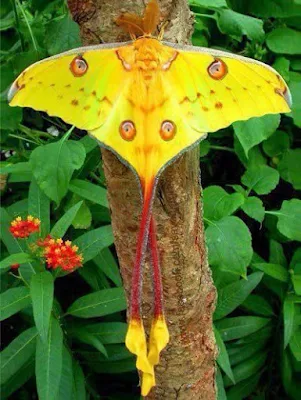Eshima Ohashi Bridge is a rigid-frame bridge in Japan that connects Matsue, Shimane Prefecture and Sakaiminato, Tottori Prefecture over Nakaumi lake. It was built from 1997 to 2004. It is the largest rigid-frame bridge in Japan and the third largest in the world. Images of the bridge have been widely circulated on the internet, owing to its seemingly steep nature when photographed from a distance with a telephoto lens, but in actuality the Shimane side has a gradient of 6.1% and Tottori side of 5.1%.
Eshima Ohashi Bridge replaced the previous drawbridge. Traffic was obstructed often by ships for about 7 to 8 minutes. Also large vehicles over 14 tons were not allowed on the drawbridge. The drawbridge saw 4,000 vehicles a day cross.
Eshima Ohashi Bridge has become a modest tourist attraction in its own right. The bridge spans 1.7 kilometers over Lake Nakaumi, between Sakaiminato in Tottori Prefecture and Eshima in Shimane Prefecture. Seen from the Shimane side, the bridge looks impossibly steep. However, in reality, the bridge has a gradient of 6.1% on the Shimane side and 5.1% on the Tottori side. The bridge is the largest rigid-frame bridge in Japan and the third largest in the world. It is often referred to as the world's “craziest” or “scariest” bridge.
Large ships pass under the bridge which necessitated its 45-meter height; the slope angle on the Shimane Prefecture Matsue City side is 3.5 degree and the Tottori Prefecture Sakaiminato City side slopes at a 2.9 degree angle. If you’re taking a picture, in order to see the bridge’s famous “sloping up into the sky” effect, it’s recommended you take pictures from the Matsue City side.
The Eshima Ohashi Bridge is also known as “Betabumizaka.” This essentially means “Pedal-to-the-floor Hill” the reason for this name is that unless you push your car’s accelerator pedal all the way down you won’t be able to continue driving up the steep bridge incline. Of course you can also walk up the bridge, and in fact if you’re driving you won’t be able to enjoy the beautiful views at the top of the bridge like you would if you were walking. The bridge’s night scenery is similarly beautiful.
Large ships pass under the bridge which necessitated its 45-meter height; the slope angle on the Shimane Prefecture Matsue City side is 3.5 degree and the Tottori Prefecture Sakaiminato City side slopes at a 2.9 degree angle. If you’re taking a picture, in order to see the bridge’s famous “sloping up into the sky” effect, it’s recommended you take pictures from the Matsue City side.
The Eshima Ohashi Bridge is also known as “Betabumizaka.” This essentially means “Pedal-to-the-floor Hill” the reason for this name is that unless you push your car’s accelerator pedal all the way down you won’t be able to continue driving up the steep bridge incline. Of course you can also walk up the bridge, and in fact if you’re driving you won’t be able to enjoy the beautiful views at the top of the bridge like you would if you were walking. The bridge’s night scenery is similarly beautiful.





















































